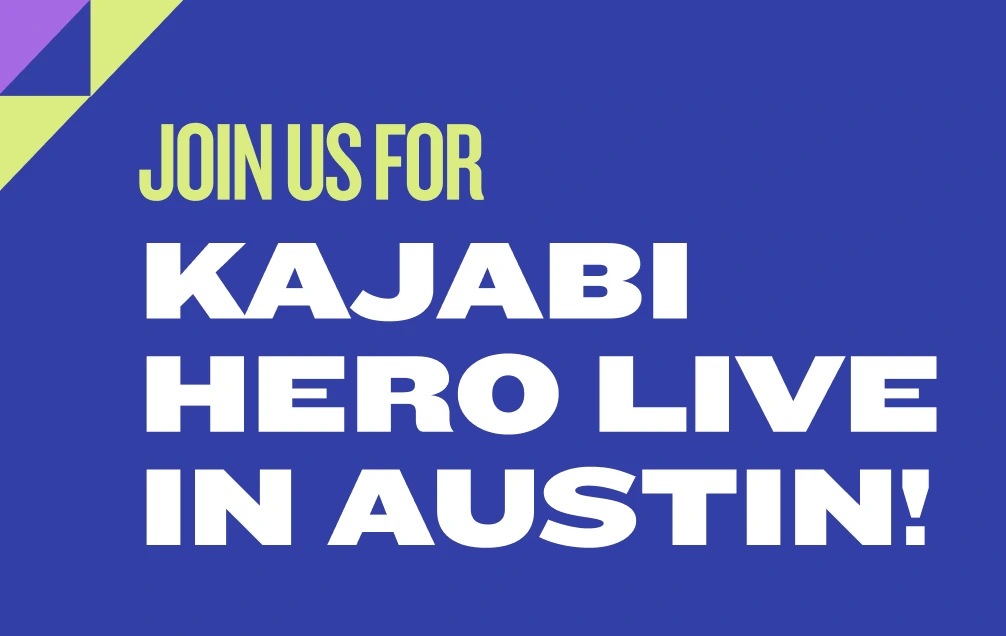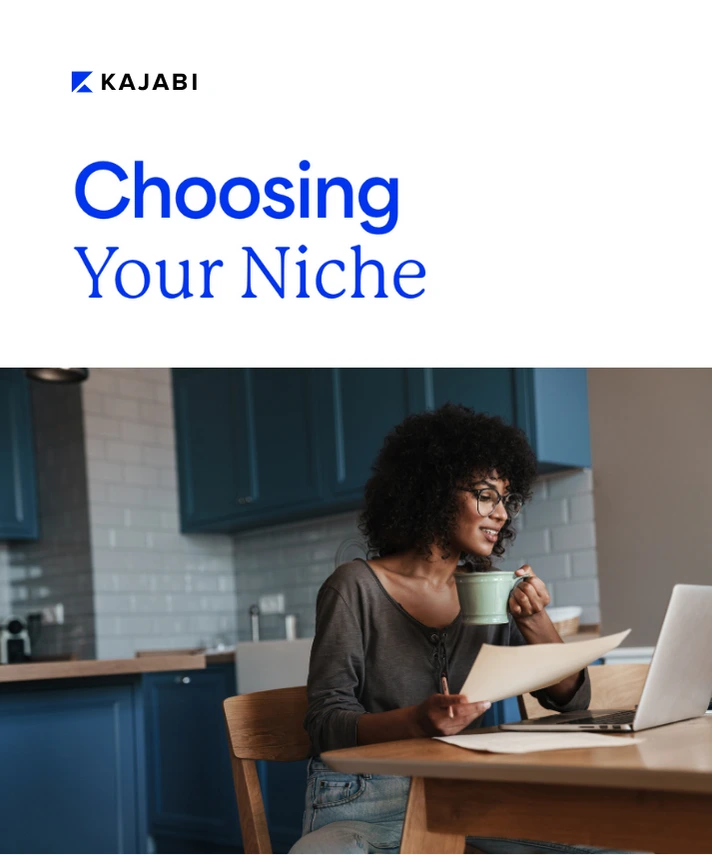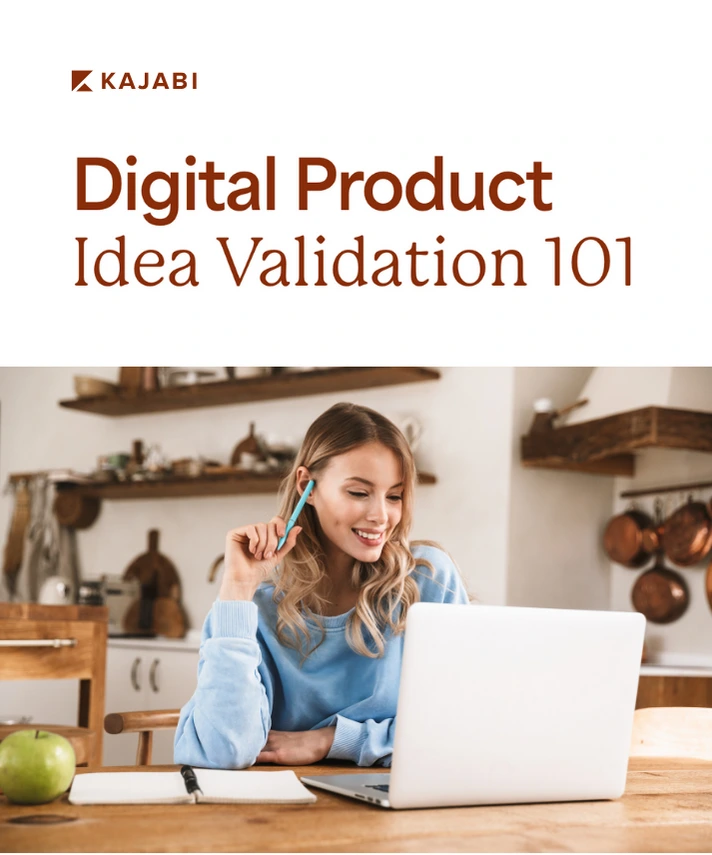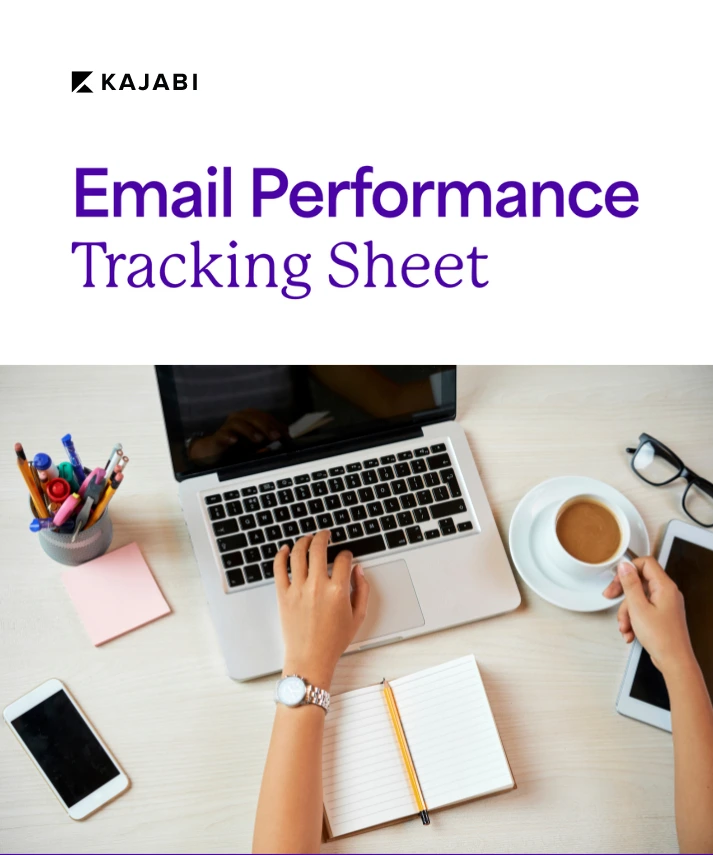
30 Ways to Increase Your Conversion Rate and to Sell More in 2018
Get free expert insights and tips to grow your knowledge business sent right to your inbox.
Conversions are the goal for any entrepreneur. You want people to convert — or, put another way, to take action — based on an offer with which you present them.
It sounds simple, right? A conversion is simply an offer and an acceptance, sort of like a social or transactional contract. You ask someone to do something you want, then reward them by living up to your end of the bargain.
That’s why business owners and marketers are always talking about conversion rates. Don’t worry if you’re not familiar with the term, though. We’re going to define conversion rates and help you boost yours with 30 incredible tips.
In other words, we’re going to help you sell more Knowledge Commerce products by optimizing your conversion rate.
What Is a Conversion Rate?

We’ve already defined conversion: It’s when someone takes action based on what you ask him or her to do.
Your conversion rate, therefore, is the percentage of time when people take action on your offer rather than clicking away.
Sounds simple enough, right? Let’s say 1,000 people visit your landing page and 500 of them sign up for your email list. That makes your conversion rate 50 percent.
But what influences your conversion rate? Good copywriting plays a huge role. If you’re able to write compelling, persuasive copy, you’ll see your conversion rates soar.
It’s also important to understand sales and marketing and to use the right tools — many of which you can find right within the Kajabi platform.
But let’s cover the different ways in which you can increase your conversion rates and sell more of your Knowledge Commerce products.
1. Create Dedicated Landing Pages
A landing page is a single page on your website that has one goal: to convert customers. That’s its only job.
You can have as many landing pages on your website as you need. Each one, however, should serve a singular and specific purpose.
Landing pages can convert prospects by encouraging them to take many different types of actions, such as the following:
- Sign up for your email newsletter
- Buy one of your online courses
- Join your membership site
- Take a survey
Lots of other options exist. You can decide what offers you wish to present and how you want your prospects to respond. The important thing is to create a dedicated landing page for every offer.
2. Craft Persuasive, Unique Headlines
The headline is the single most important part of a landing page — except, of course, for the call to action. Your headline should tell prospects what they can expect from the page.
You don’t want just any old headline. It should present something new and unique to the reader.
Compare these two headlines, for example:
- Buy My Online Course
- Avoid These 20 Photography Mistakes to Boost Your Income
The second one is more appealing, right? It’s specific, addresses a pain point, and uses more colorful language.
3. A/B Test Different Elements of Landing Pages
A/B testing is one of the most powerful ways to improve your landing pages. You’ll want to run A/B tests every time you launch a new one.
Most importantly, you’ll continue to test over time. Your prospects’ needs and desires change and evolve, so your landing page copy and other elements should change, too.
Test One Element at a Time
An effective A/B test only involves one element. In other words, you’ll create two identical versions of a landing page except for one specific part, such as the headline or image.
If you test multiple variables at the same time, you won’t know which contributed to different conversion rates. Maybe prospects liked the headline better, but perhaps they reacted to the image. You’ll never know if you test more than one variable at a time.
Use High-Quality Testing Criteria and Tools
You’ll also want to use good tools and criteria to A/B test your landing pages.
The criteria should revolve around your conversion rates. Just because people like a landing page doesn’t mean they’ll take action on whatever option you present them with.
Start with a good tool to better help you understand how each variation of a landing page contributed to your conversion rates. Following are three of the best options.
Google Optimize

You can use Google Optimize to A/B test as many landing pages as you want. It’s simple to use, easy to set up, and fits well within the Google suite of tools and programs.
Google Optimize is free. You can also upgrade to Optimize 360, which is a premium version of the tool and will require a custom quote. The free version is more than enough for most small businesses, though.
Optimizely

Another option is Optimizely, which is a premium tool that offers a free trial you can test drive. It’s a full suite of A/B testing tools that can improve your users’ experience on your landing pages and help you optimize for conversions.
VWO

Finally, we can also recommend VWO. It’s even more comprehensive, in some ways, than Optimizely, and it’s highly intuitive. If you’re looking for the best metrics and the highest performance, you might want to go with VWO.
4. Create a Compelling and Clear Value Proposition
If you’ve studied marketing strategy, you know that a clear value proposition is key to convincing customers to buy. Put another way, it’s crucial for increasing your conversion rate because it helps people make decisions about buying your products or otherwise interacting with your brand.
A value proposition tells prospects why you’re different from the competition and how you can satisfy their needs or desires. In other words, it paints your business as the solution to the prospect’s problem. The more specific and value-rich your proposition becomes, the higher your conversion rate.
5. Set Up Your Unique Sales Funnel

A sales funnel consists of several moving parts, the most important of which are lead generation and conversion. Attract consumers to your business (lead generation) and convince them to buy (conversion).
Your sales funnel needs to address all the areas in between those two desirable outcomes. For instance, a customer who signs up for your email list might not immediately buy your product. He or she could follow you on social media, read your blog posts, or look for reviews of your products first.
If you optimize all of those touchpoints for conversions, you’ll come out ahead.
6. Avoid Complex, Confusing Language
It’s easy to confuse consumers, especially if they’re not experts in your industry. When you start throwing around heavy-handed jargon, you might think you sound smarter and more credible, but your prospects likely perceive you as confusing and difficult to understand.
Simplify your language to boost your conversion rate. Talk to people as though you were having a conversation with them over a cup of coffee. If you write like that, consumers will feel drawn to your brand.
7. Get the Objections Out of the Way
When we’re considering a product, we always have objections:
- It’s too expensive.
- I don’t really need it right now.
- Nobody else I know has bought it.
- The product might not do what it says.
These objections are what stop people from buying everything they see. Objections are healthy, but you have to overcome those objections to get people to buy from you.
How? You answer the objections with counter-arguments in your sales copy. Acknowledge the objections, explain why they’re irrelevant to your product, and encourage your prospect to buy.
8. Find a Way to Build Trust
Establishing trust with prospects and customers will help you grow your brand, increase customer retention, and overcome those objections we talked about above. However, it’s not easy to build trust through a screen.
The best way to build trust is to be honest with your prospects and customers. Let them know exactly what you offer and who it’s right for. That way, people will trust that you can deliver on the promised goods.
9. Add a Video
To make a connection with your prospects, upload a video and use it for your landing page. Talk directly to the consumer in friendly, honest language.
Videos are highly engaging because they stimulate more of our senses than words on the page. People can see you, hear you speak, and comprehend what you say.
Just make it short. You don’t want to overwhelm the consumer with too much information. Plus, if the video is long, many people won’t even bother starting it.
10. Make Buying as Simple and Pain-Free as Possible

It might sound obvious, but a long, complicated sales process will turn people away. The best way to get your conversion rate up in the clouds is to make buying from you as simple and stress-free as possible.
Use a one- or two-stage sales process. Don’t ask for more information than you need, and don’t distract the consumer from completing the transaction.
11. Keep Conversion Elements Above the Fold
If you want to increase your conversion rates, make sure consumers don’t have to scroll to get to the conversion part of the process. Put your form, CTA button, or other conversion element at the top of the page.
You can also include another conversion element farther down the page, but make sure it’s the same as the first CTA.
12. Tell Your Users What You Want Them to Do Next
The easiest way to convince people to buy is to ask them. Tell them you want them to be part of your membership site or to buy your online course.
That sounds obvious, but too few entrepreneurs think of asking for the sale. They do everything else — but they don’t have great conversion rates.
Why? Most people won’t convert on an offer unless you ask them. They have too many other demands on their time.
13. Avoid Offering More Than One CTA

A CTA should direct your prospect exactly where you want them to go. It should be the only conversion element on the page (unless you repeat the exact same offer, as described above).
Sure, it might seem logical that offering more than one CTA would give your prospects more options, and therefore more opportunities to convert. However, the opposite usually occurs.
When presented with too many choices, people experience analysis paralysis. They’re overwhelmed with the options on their plates, so they choose to do nothing. Then they don’t have to make a complicated choice.
To avoid this, don’t give your prospects other options. Stick to your original offer.
14. Use as Few Form Fields as Possible
Have you ever abandoned a website because, to get what you wanted, you had to answer 20 questions? It happens more often than you might think.
We’re busy, right? We have too many things to get done in a day, so if you force us to follow a long, drawn-out process, we’ll just abandon the transaction.
If you’re asking for email addresses, for instance, include just one or two form fields for the email address itself and, if necessary, the prospect’s name. Don’t add other fields just for the heck of it.
15. Communicate Value
We’ve already touched on value, but it can’t be overstressed. The more value you put into your offer, the more likely people become too convert.
This is why many Knowledge Commerce professionals can benefit from giving away some of their best information. Don’t be afraid to be generous with what you know.
After all, your offer is designed to whet your prospects’ appetites for your products. If they know you can deliver exceptional value, they’ll want to buy your product.
Additionally, make sure you’re clear about the value people will receive from your products themselves. Focus on benefits instead of simple features. Help prospects see what they’ll gain from buying from you.
16. Offer Proof
Cold, hard evidence isn’t just important for detectives and lawyers. It’s also important to consumers.
If you can show incontrovertible proof that your product helps people, do so. It’s more powerful than any sales copy you could ever write.
For instance, if you have created a weight loss course, you might let prospects know that your customers lose an average of 25 pounds during the course. Of course, you’ll want to back that up with testimonials (which will cover next) and other evidence to support your claim.
17. Add Customer Testimonials
As mentioned above, customer testimonials are powerful. They benefit your business in three primary ways:
- Demonstrating that other consumers have bought the product (which eliminates the fear of going first objection)
- Underscoring your credibility in the industry
- Showing that those customers not only benefited from your product, but also took the time to advocate for it
Video testimonials tend to be the most effective. However, don’t turn up your nose at written testimonials. Just ask your customers if you can include their full names, their photos, and other evidence that they exist.
18. Compare Yourself to the Competition
This sounds painful, right? You don’t even want to think about the competition, let alone mention them in your sales copy.
However, comparing yourself to your competitors shows that you’re not afraid of competition and that you’re willing to go toe-to-toe with them on what really matters.
Ideally, showcase your value proposition against what your competitors offer. You do X, Y, and Z better, more thoroughly, or more accurately than anyone else.
19. Answer Common Questions
In addition to objects, customers often have questions about products before they buy. You might have noticed that e-tail giant Amazon has anticipated this and creation sections on its sales page for just this purpose.

As you can see from the screenshot above, this sales page for a Fitbit product has nearly 1,000 questions.
Create a FAQ section on your landing page to give prospects peace of mind. Deliver the answers to questions that might keep people from buying your product or converting on your offer. Having those questions and their answers accessible can skyrocket your conversion rate.
20. Allow Customers to Review Your Products

Reviews are a little scary for many entrepreneurs.
“What if people say they hate my product. Nobody will ever buy it again”
However, all products and services get negative reviews. You can’t please everyone. And savvy consumers tend to judge products by the middle-of-the-road reviews. They know no product’s perfect, so they want an even-handed opinion.
Don’t be afraid to ask for reviews. More importantly, don’t be afraid to showcase reviews on your landing pages. You might be surprised by what good things this seemingly simple addition to your landing pages can do for your conversion rate.
21. Conduct Case Studies
Case studies are often neglected by entrepreneurs. They take time, they’re cumbersome, and they don’t always turn out how you expect.
However, case studies are highly persuasive and instructive. They show consumers that you’re willing to put your product to the test.
You can also do case studies to show the need for your product. If you create a weight-loss online course, do a case study on obesity among people in your target audience. Focus on showing your prospects how they can benefit from what you teach.
22. Use Time-Bound Offers

Nothing moves products off the virtual shelves like urgency. As human beings, we’re scared of limited-time offers. We don’t want to miss out on something that could truly benefit us.
If you’re skeptical, take businesses like DesignCuts. This company promotes limited-time deals for huge savings on graphic design-related assets.

Consumers who don’t act quickly can’t get the 99-percent-off offer on things they want. So they click the “buy” button.
Notice the countdown timer. It’s not an accident. The expiration date helps fuel conversions.
23. Link to Third-Party Reviews
People don’t always review products on a business’s website. They sometimes go to third-party sites, such as Yelp, to leave their thoughts.
You can reprint those reviews on your own website, then link to the source. Show that people are talking about your products elsewhere, which boosts credibility and conversions in equal measure.
24. Incorporate Social Proof
Social proof can consist of numerous strategies and tactics. The best ones show prospects that your products are desirable.
Maybe a well-known industry expert or influencer has tried your online course and responded favorably. Make his or her comments front-and-center on your landing pages.
25. Let Your Prospects Take a Test Drive
Demos can also have a huge benefit for conversion rates. People like to check things out — kick the tires, so to speak — before they commit to a purchase.
Instead of a traditional demo, you might provide prospects with a sneak peek into your latest online course. Give away just enough to leave them wanting more.
26. Remove All Distractions
Distractions can plummet your conversion rates. They take prospects’ attention away from what really matters: the conversion element.
It’s fine to include text, bullet points, images, and videos on your landing page. However, make sure they flow logically and have a solid reason for being there.
Don’t use a fancy font just because you think it looks pretty. Avoid including irrelevant or generic images just to have graphics on the page. Everything you include should be intentional.
27. Add Incentives for Prospects Who Act Right Away
Incentives can come in many shapes and sizes, but they’re all desirable for better conversion rates. Sometimes, asking a consumer to do something just isn’t enough.
Lead magnets are a great example of an incentive. You’re willing to give away something of value for free. All you ask in return is for the visitor’s email address.
You can also offer a discount, coupon, bonus material, or anything else of value to get people to click, buy, or sign up. Focus on providing incentives that directly benefit your target demographic. Revisit your buyer personas to better understand what they want and need.
28. Add a Guarantee
Have you ever been on the fence about buying a product, then hit the “buy” button when you saw two magic words: 100% guaranteed?
They’re not really magic words, but they do pack quite a punch. They take away the risk associated with buying your product. Just make sure you’re willing to honor that guarantee if a customer invokes it.
29. Use CTA Buttons Rather Than Plain-Text Links

Plain-text links don’t attract much attention. Consumers are used to seeing them all day, every day, so they’re less likely to notice them.
Make your CTAs stronger by putting them in a button. It doesn’t have to be a traditional bubble button out of 1999 design. You could dress it up with an underline and a hover effect or some other visual cue that the link is the most important thing on the page.
30. Test Various Content Lengths
Landing pages work differently for different audiences. Some people want to see a long landing page that answers all of their questions and goes into detail about a product’s benefits. Others want you to get to the point right away.
As a rule, landing page length is correlated with product complexity. The more complex the product, the more text you need on the page. Test different lengths to see what works best with your audience.
Use Kajabi to Turn Your Knowledge and Content Into Products You Can Sell
At Kajabi, we know Knowledge Commerce entrepreneurs need as many tools and strategies as possible to compete in an increasingly crowded space. That’s why we created Kajabi in the first place.
It’s a unique set of tools and content management aids that help entrepreneurs like yourself become self-sufficient by selling their knowledge to others. Best of all, the first 14 days are on us. Start selling your own knowledge today and discover the success that thousands of other small business owners have found in this growing space.
Conclusion
There you have it. You now possess 30 strategies to implement for conversion rate optimization. Put them to good use, and you’ll sell more of your Knowledge Commerce products.
Start by creating dedicated landing pages with unique headlines, A/B-testing elements, compelling value propositions, and other intriguing elements. Set yourself up for success by using the right tools and comparison criteria.
Make sure to avoid using confusing language, multiple CTAs, long forms, and distracting elements. Focus the user on the conversion you want him or her to make.
Building trust, offering social proof, answering questions and objections, and adding scientific data can all help boost conversion rates. You might also want to incorporate video, time-bound offers, reviews, incentives, guarantees, CTA buttons, and links to third-party reviews. Testing various content lengths and working with a unique sales funnel can also help.
Once you’ve put these 30 strategies to use, you’ll be ready to sell more products and build your loyal following.
Have you measured your conversion rates?
Free Training: Learn How To Launch & Grow Your Knowledge Commerce Business
If you're ready to take your online business to new heights and get sales, watch our free training where we'll teach you how to grow your Knowledge Commerce business, no matter what your niche is!
Watch Our Free Training Now
Launch & Grow Your Knowledge Commerce Business Today













